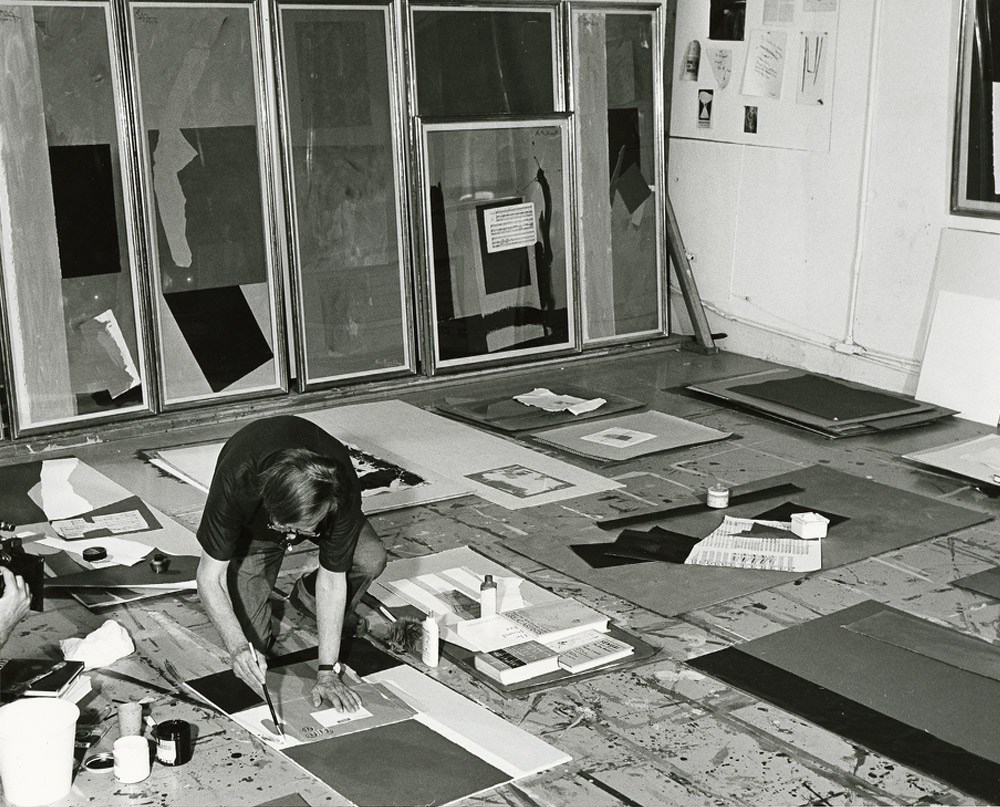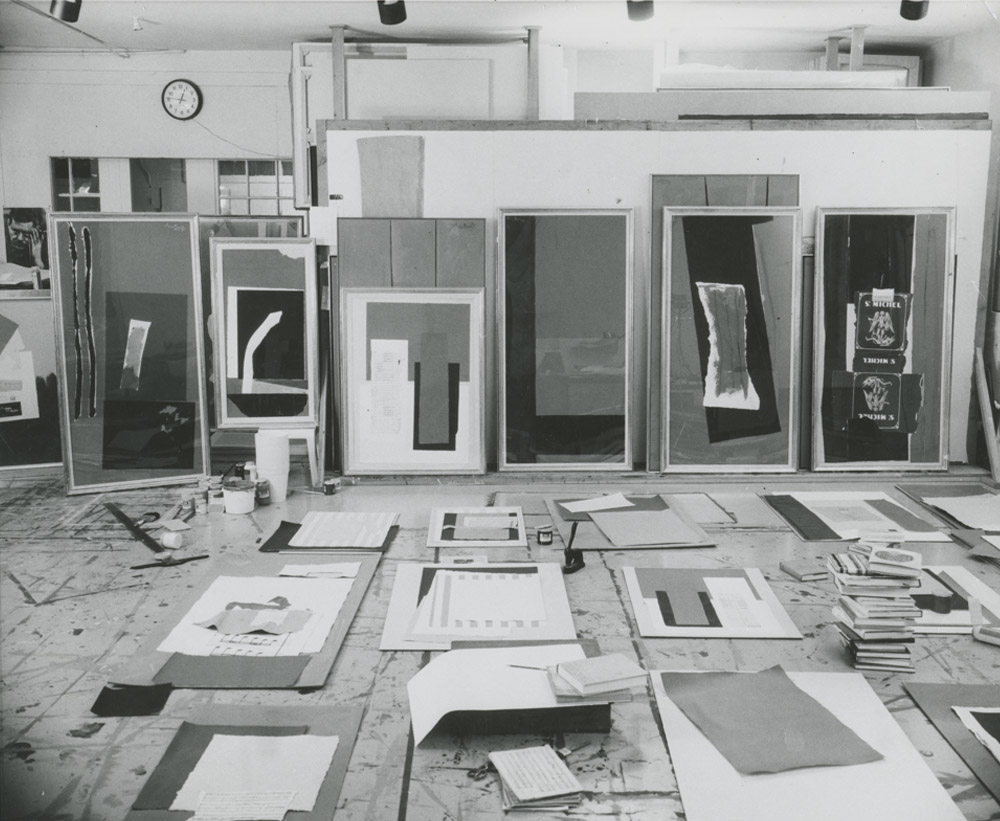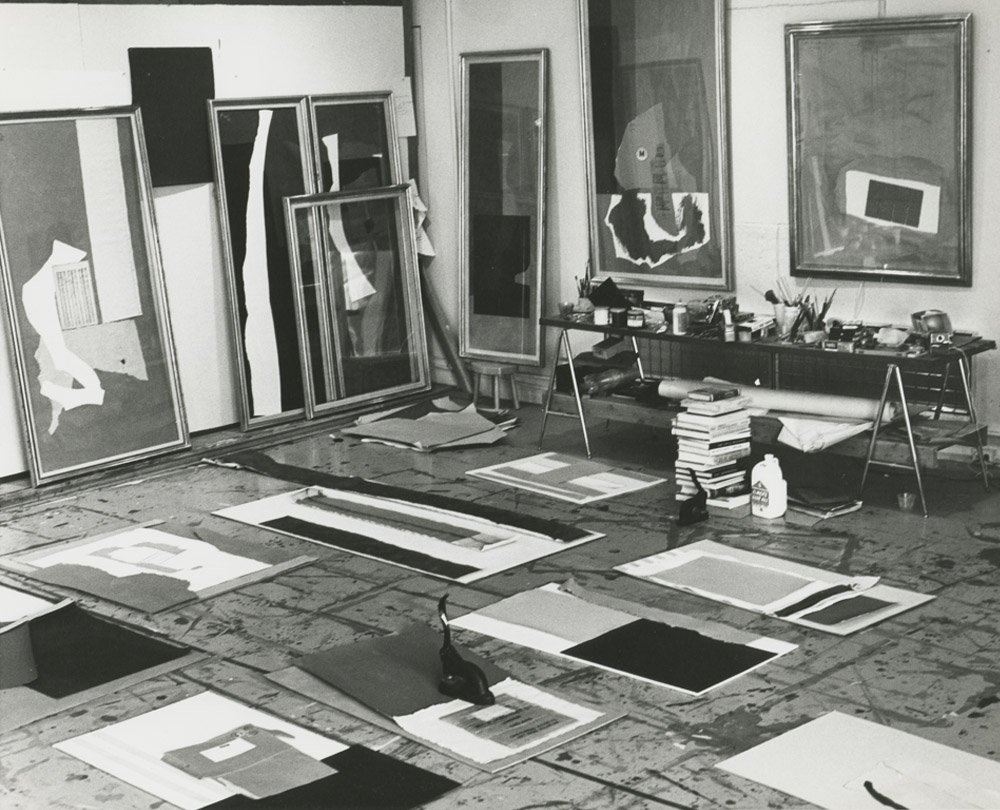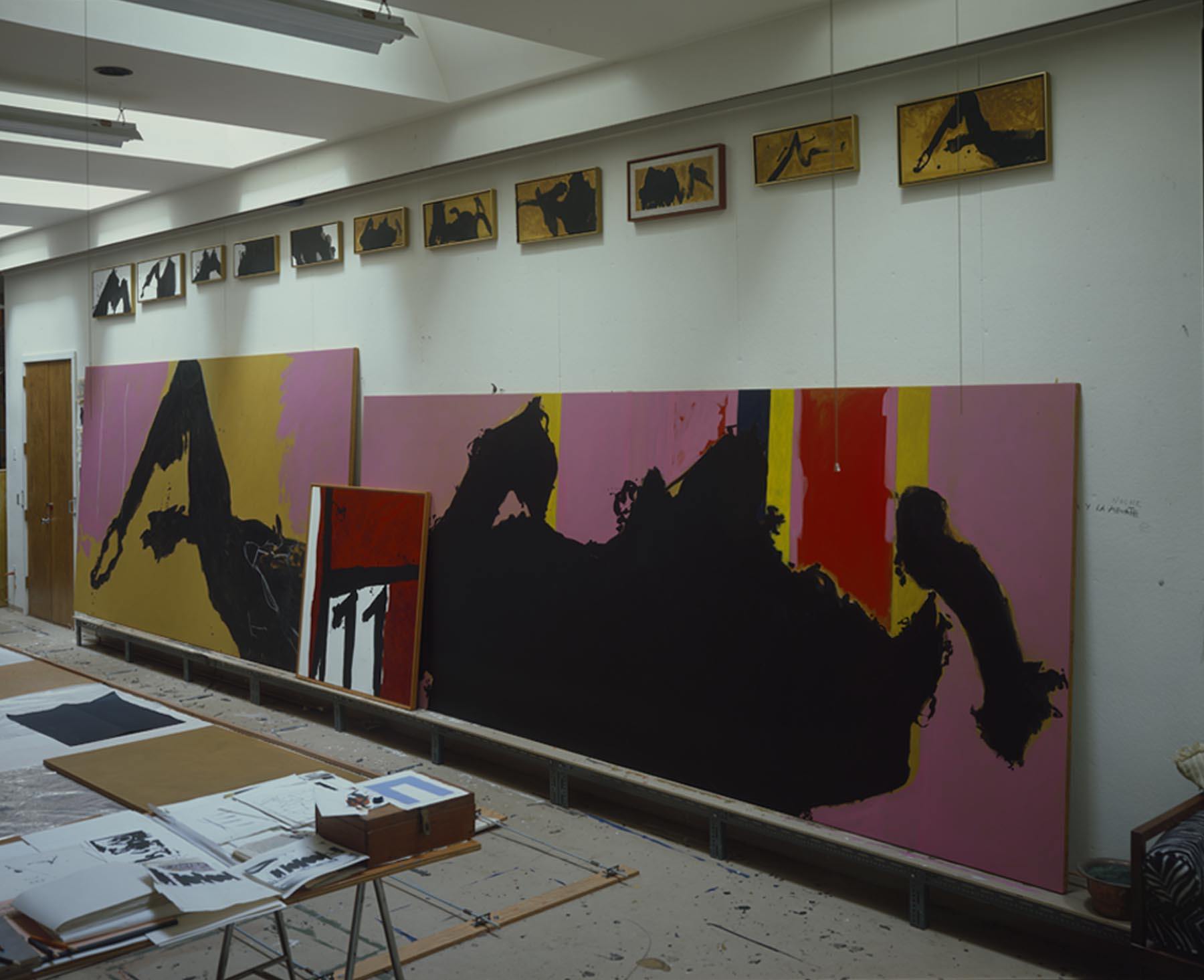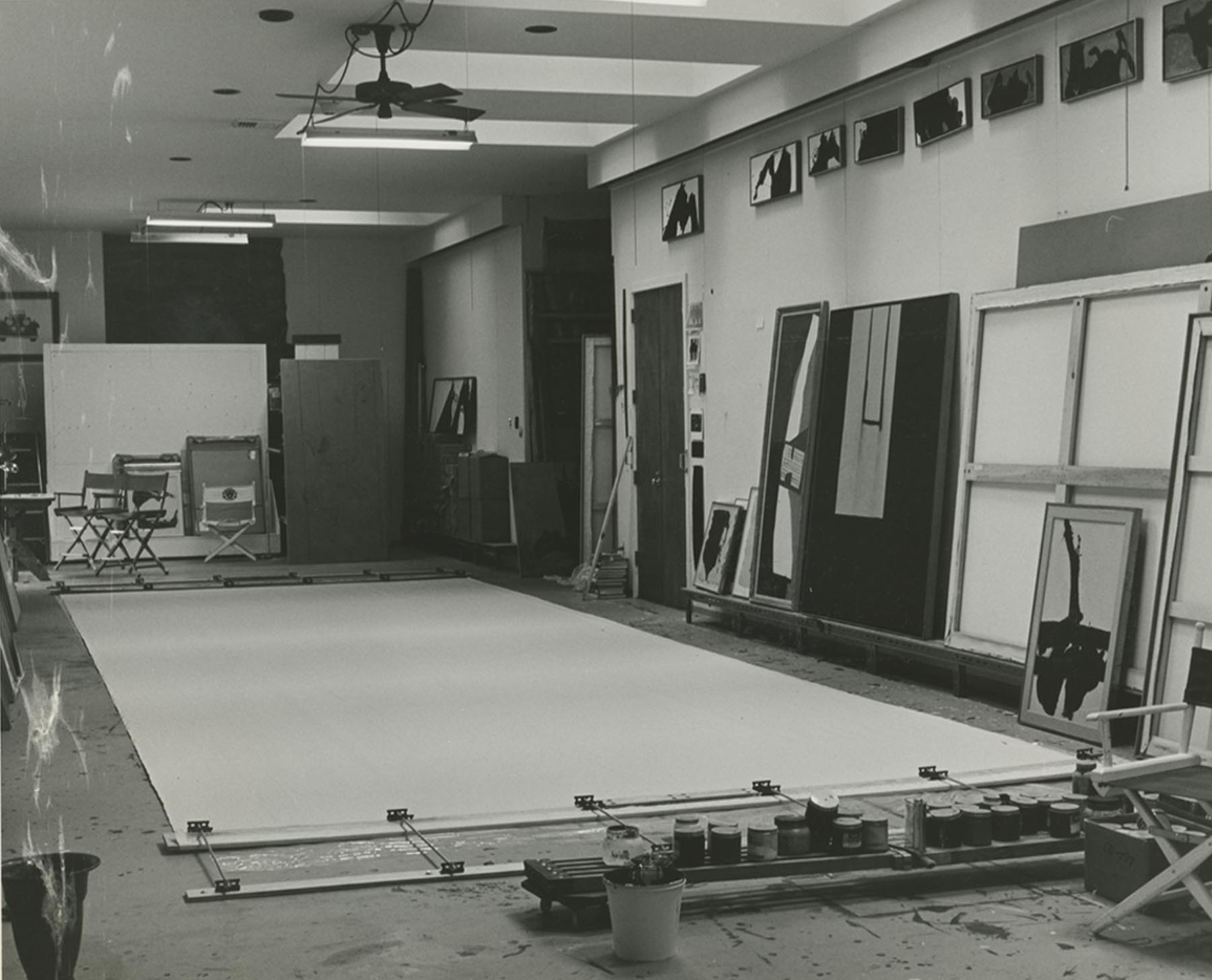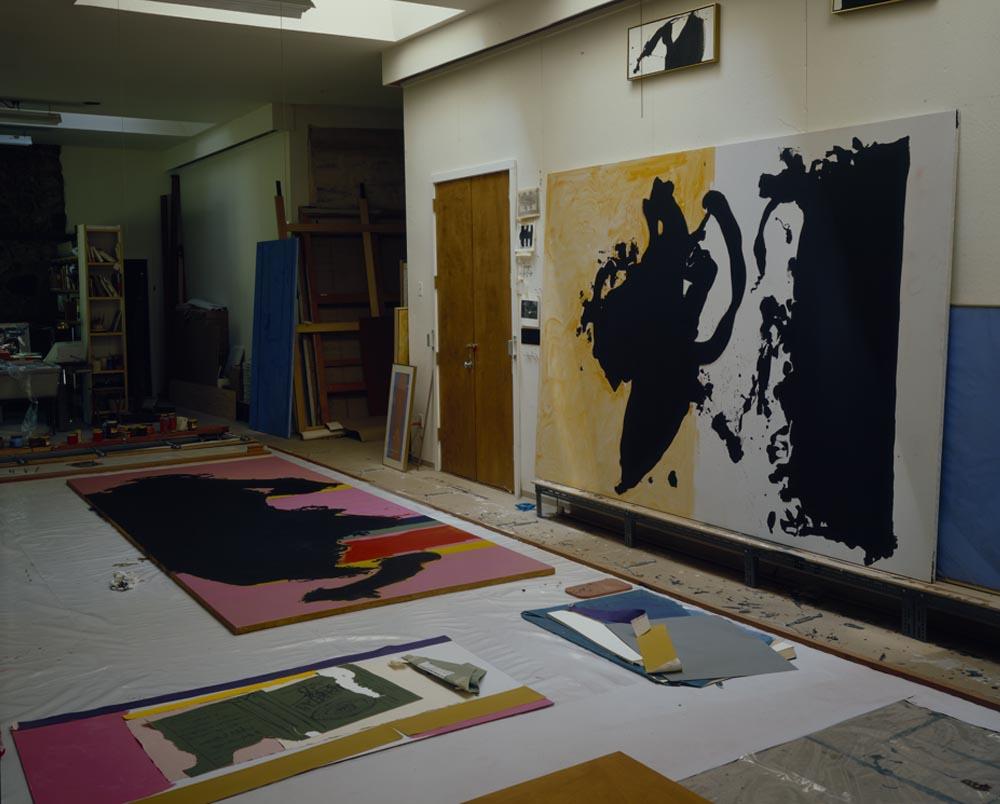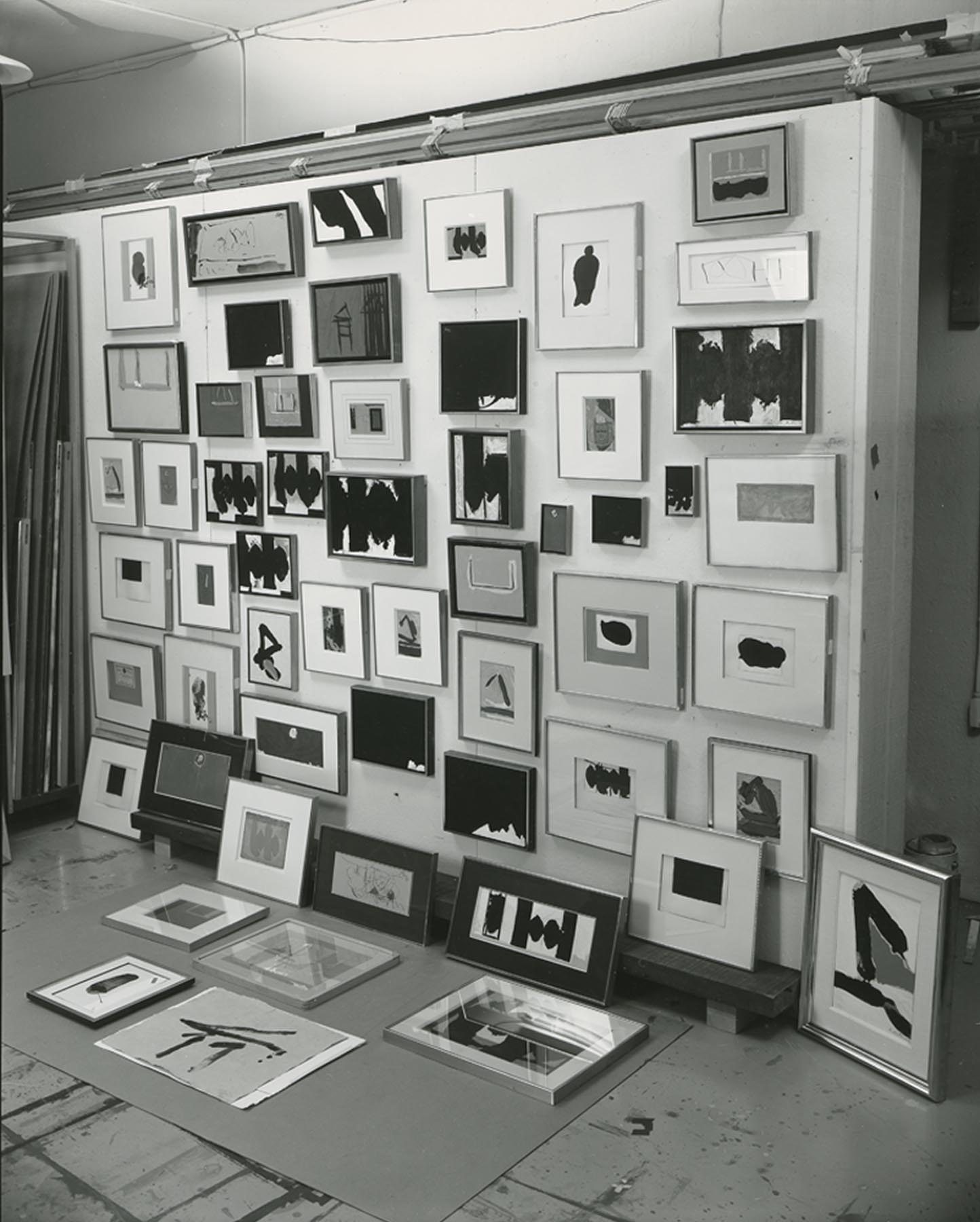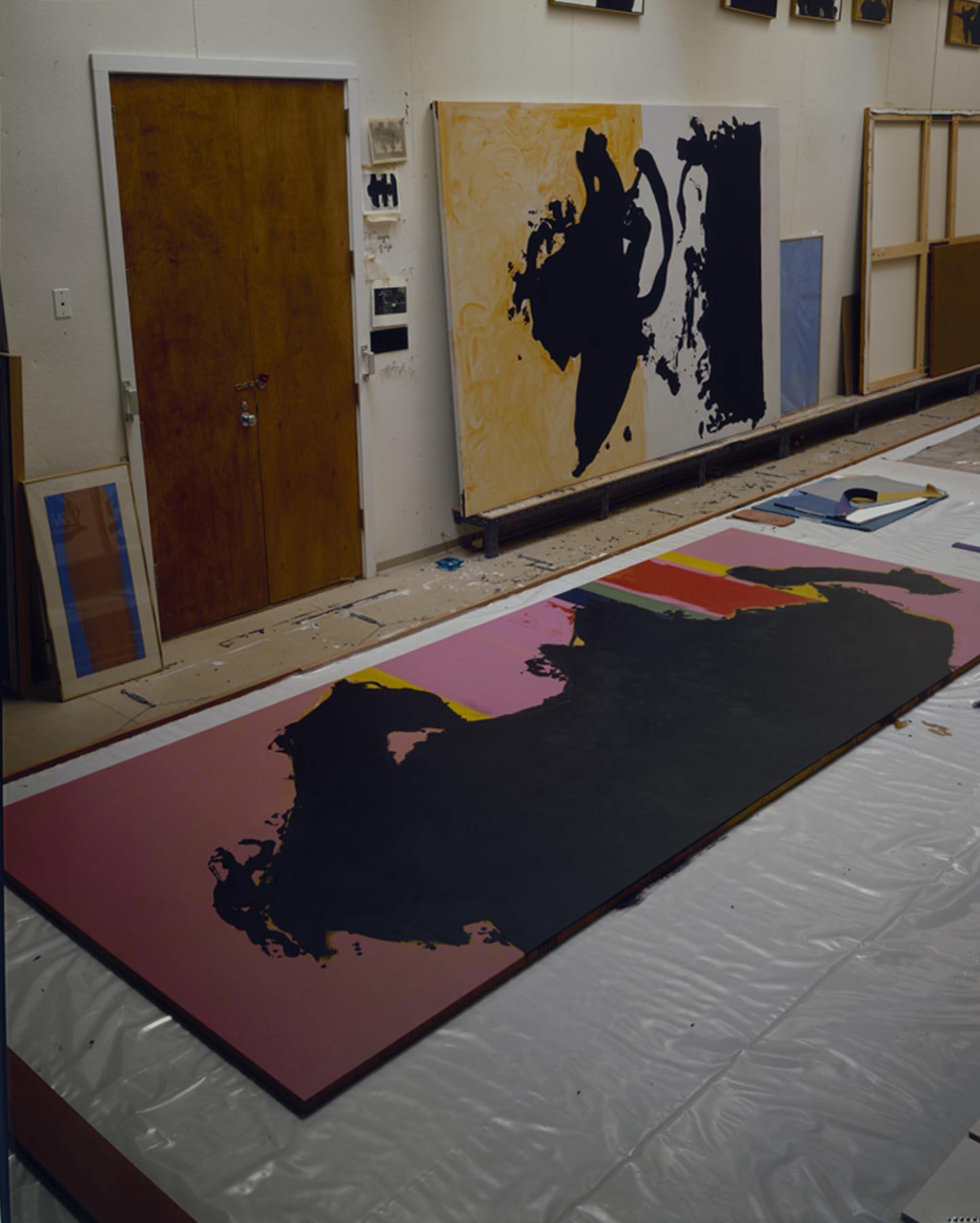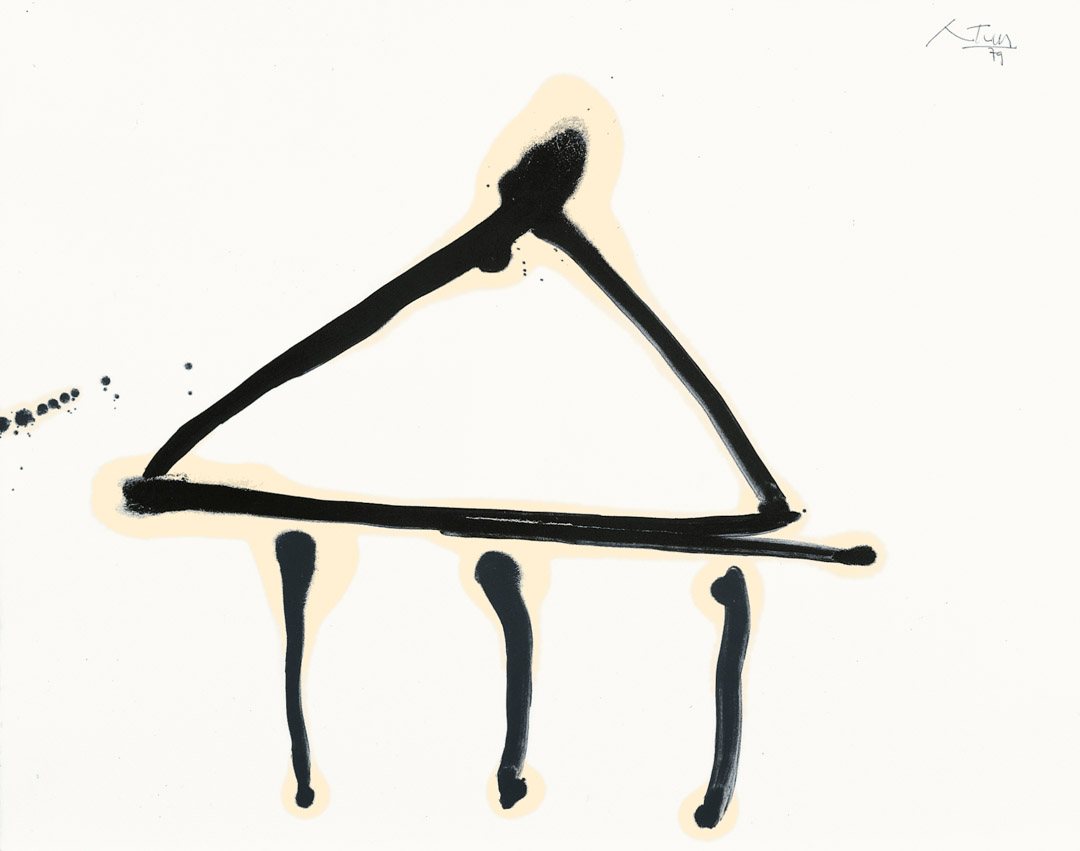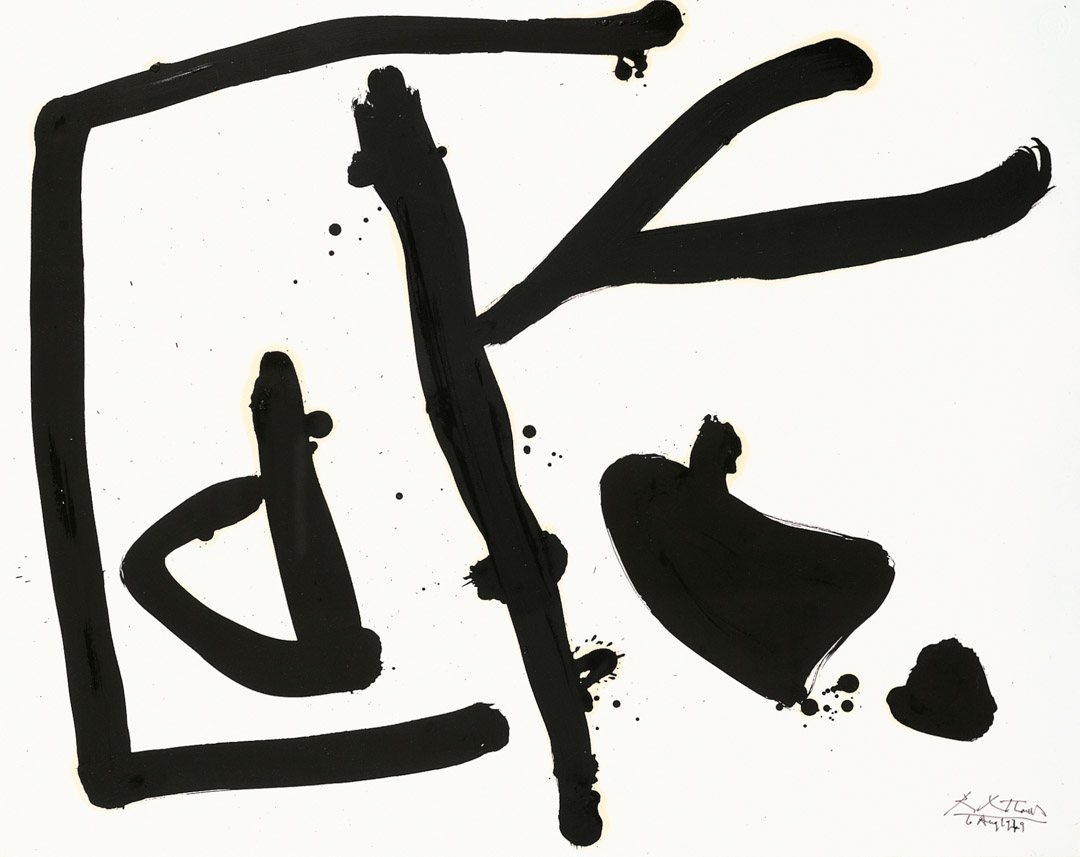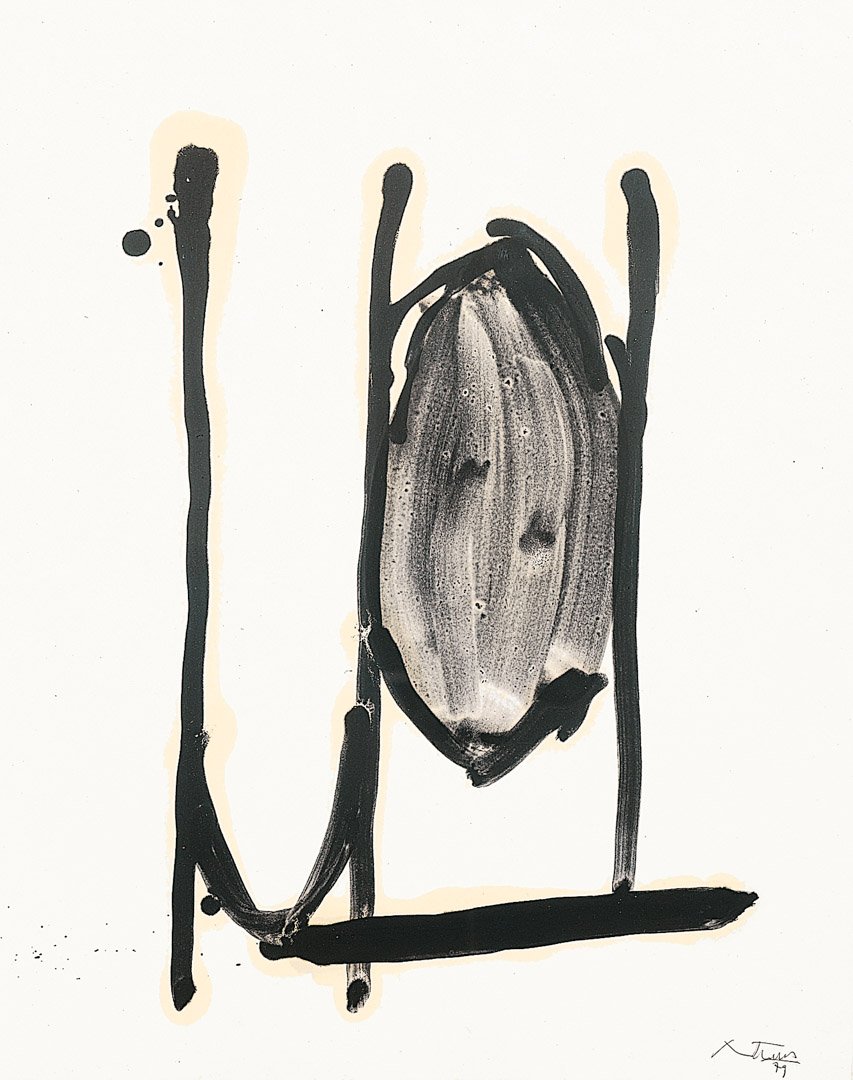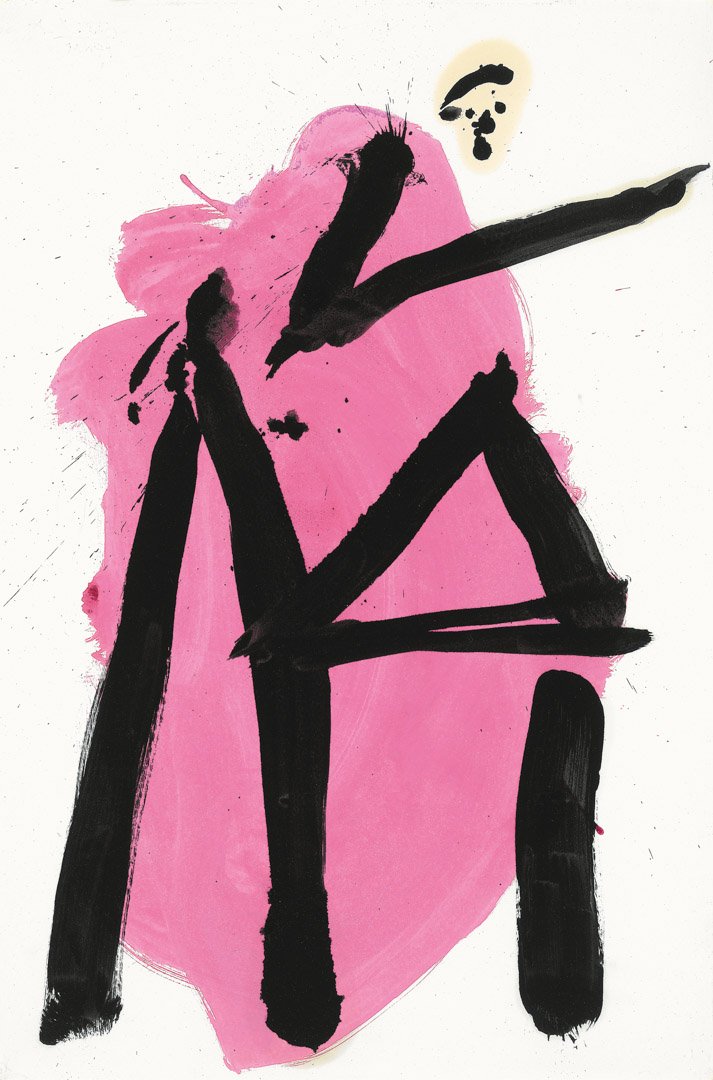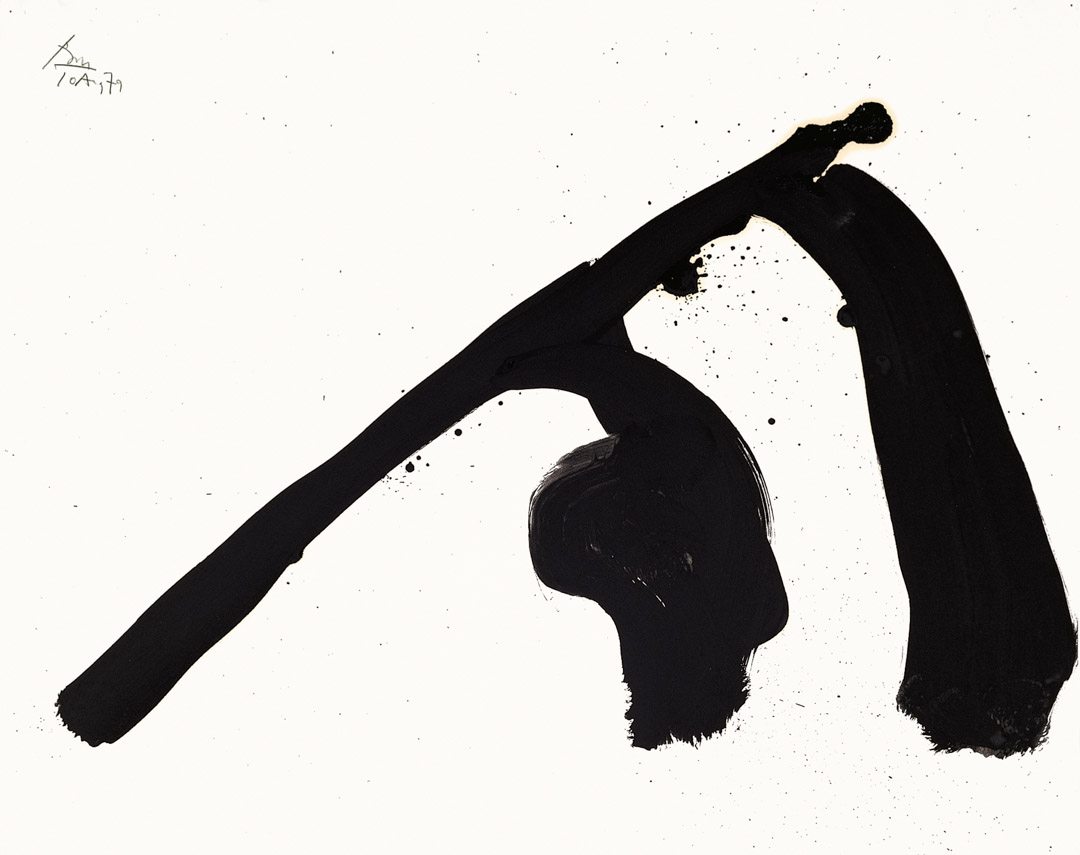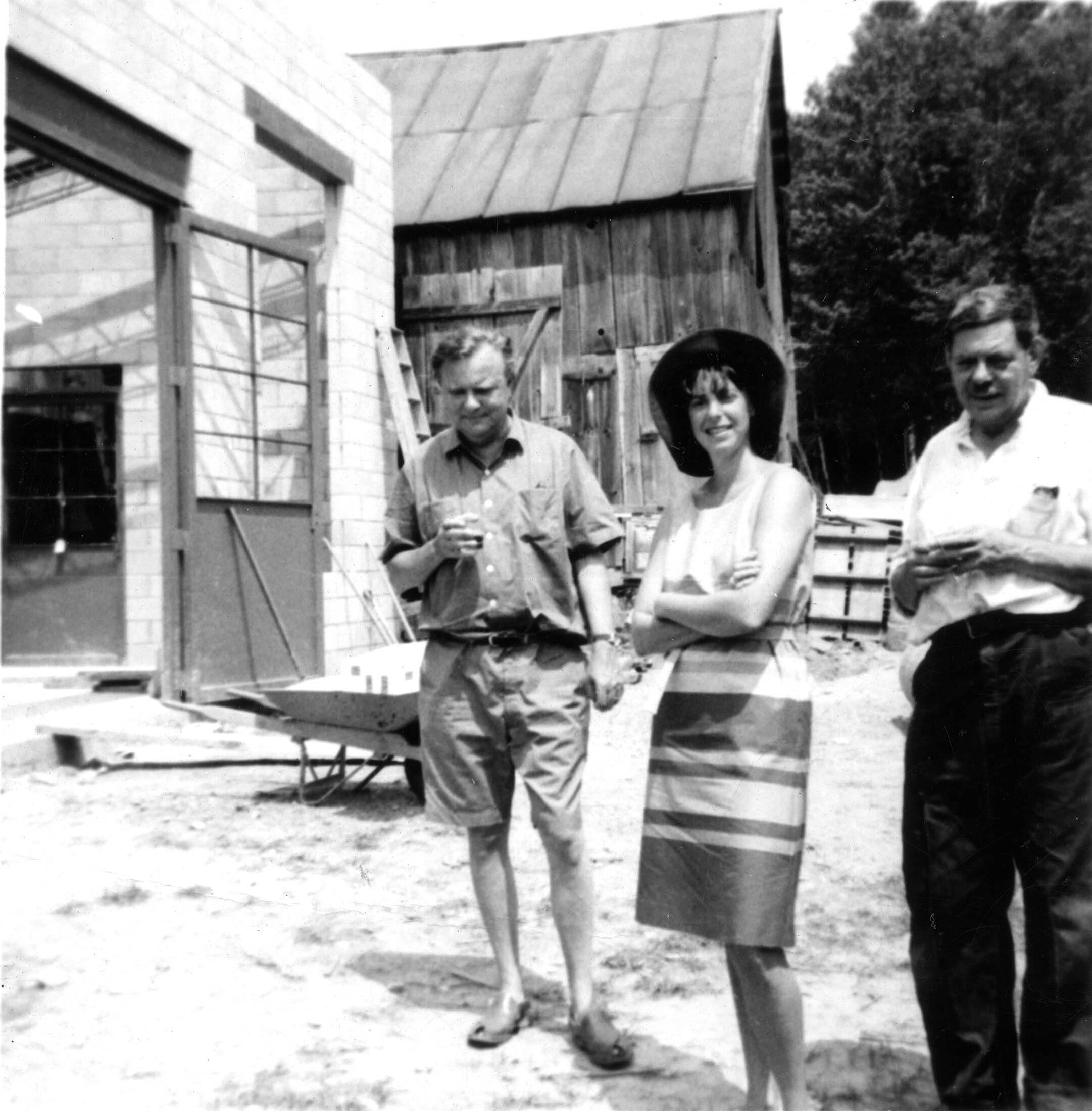Your browser is out-of-date!
Update your browser to view this website correctly. Update my browser now
Robert Motherwell 1979-1980: Recollections and Ideas
by Robert S. Mattison
In this illuminating essay, Robert S. Mattison recounts the beginning of his friendship with Robert Motherwell while he was a graduate student at Princeton working on his dissertation on Motherwell’s early paintings.
Dr. Mattison is the Marshall R. Metzgar Professor of Art History at Lafayette College. In addition to his work on Motherwell, he has written books on Grace Hartigan, Robert Rauschenberg, Arshile Gorky, and Ronald Bladen, and is the director of the Franz Kline catalogue raisonné.
. . . .
In 1979, Robert Motherwell told me, “People do not realize that basically I have six or eight motifs that I have been working through since my earliest years.” He referred to his movement between various themes not simply as aesthetic choices but more personally as “a way to survive.” In a similar spirit, Motherwell confided to me that the Elegies to the Spanish Republic, his most extensive series, were still “as difficult for me as the first one I made. I think of the motif in terms of Cézanne’s Mont Sainte-Victoire. Cézanne was obsessed with its hulking shape and the variations to be found in it.”
In this short essay, I want to emphasize the intensity of Motherwell’s involvement with his art, and the struggles that he underwent to realize his vision. Through Motherwell’s words, I have tried to capture the way he thought about his art as a deeply personal voyage of self-discovery. This essential aspect of his practice is sometimes overlooked in the literature on him, which emphasizes the more public aspects of his career. Motherwell disclosed to me facets of his personality that he felt had not been given sufficient attention: “my sensuality, my brutality in terms of my preference for powerful gestures, my impetuosity and freedom, and my alienation.”
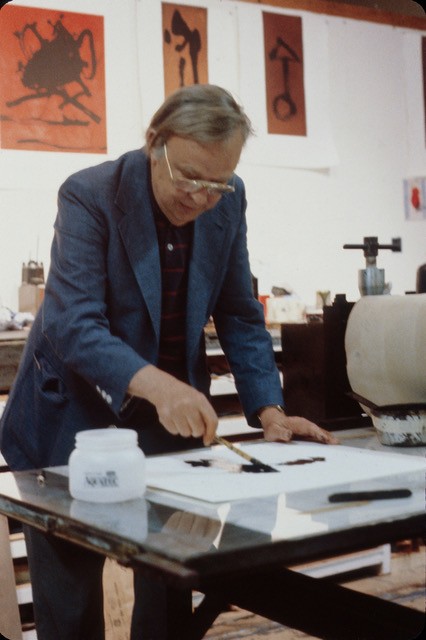
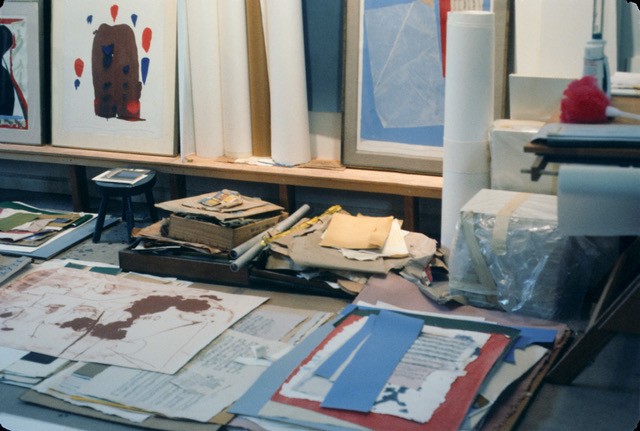
I spent eight months, from October 1979 to May 1980, at Motherwell’s studio/home in Greenwich, Connecticut. I was twenty-seven years old, having just finished my graduate coursework at Princeton University. I was fascinated by Motherwell’s art and his writings, and had a particular interest in the origins of Abstract Expressionism during the 1940s. Motherwell was a key link between the New York artists and the immigrant Europeans, especially the Surrealists, who fled as Hitler marched across Europe. I proposed a doctoral dissertation on Motherwell’s art and ideas in connection with that period. Through Sam Hunter, my dissertation advisor, I was introduced to Motherwell. I had written a paper on Motherwell’s 1947 painting The Emperor of China (Chrysler Museum of Art) for an Abstract Expressionism symposium to be held at the University of Virginia.[1] I asked Motherwell if I could send him the paper. About four days later, the single telephone in the graduate area of Marquand Library at Princeton rang; Motherwell said I should come to his studio, and he would make arrangements for me to do research there. Previously, Motherwell had allowed such access among younger scholars to E.A. Carmean, later founding curator of the Department of Twentieth-Century Art at the National Gallery, and Robert Hobbs, now holder of the Endowed Chair of American Art at Virginia Commonwealth University.
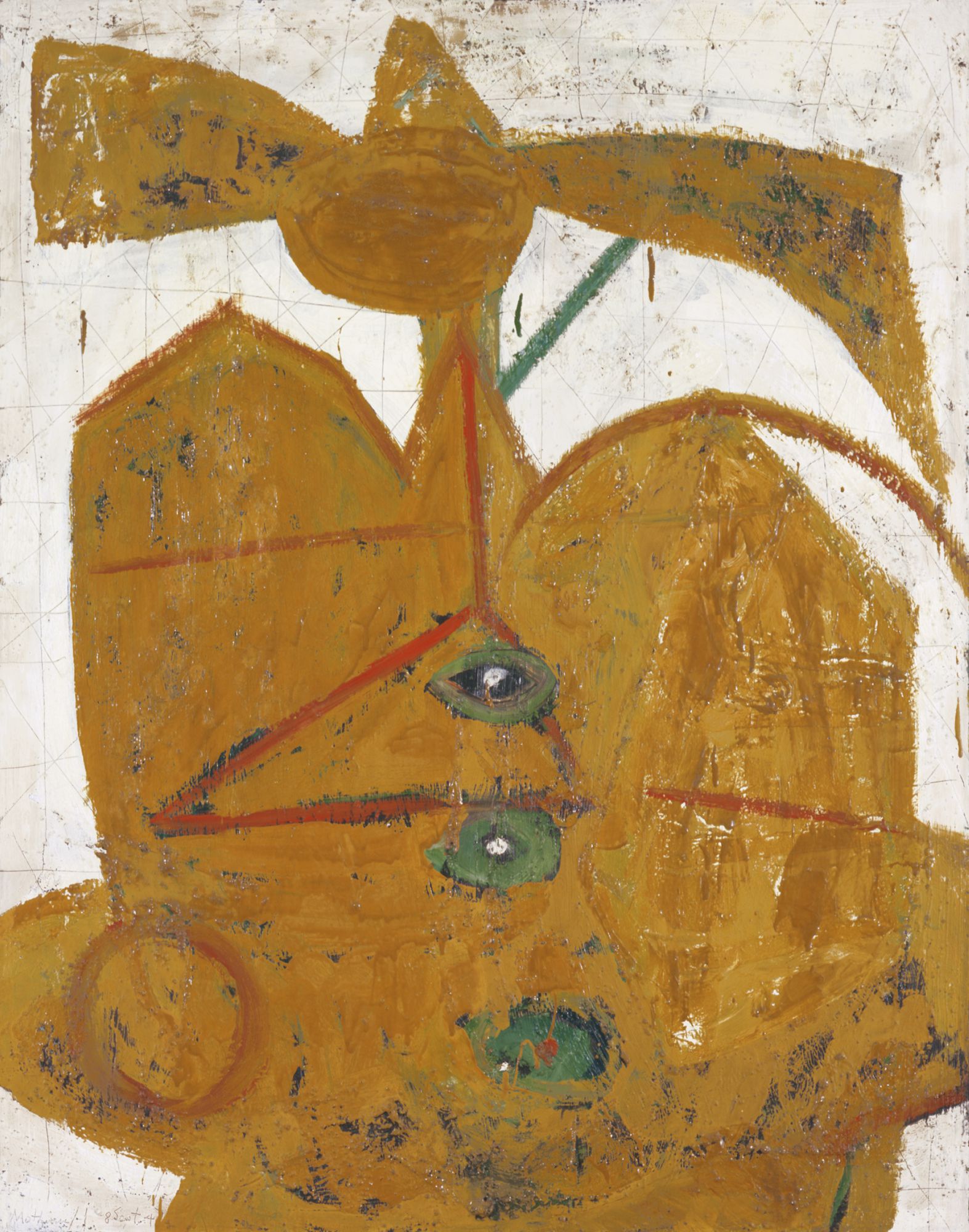
Robert Motherwell, The Emperor of China, 1947, oil on Masonite, 48 ✕ 36 in. (121.9 ✕ 91.4 cm)
I spent eight months in Greenwich and for much of that time was able to be at the studio four days per week. I was allowed access to the painting racks containing Motherwell’s earlier works, the archive of his writings, and his library. I was able to conduct interviews and was present for some of his general reflections.[2] Looking through my records, I see that the taped interviews comprise about five hours, and that there were twenty-six occasions during which I took interview notes. (Often, Motherwell did not wish to speak for an audio recording.) Most of my records were focused on particular questions about the 1940s, but I also had an opportunity to observe Motherwell around the studio and to listen to his overall ideas. Excerpts from our conversations along with my observations serve as the backbone for this essay.
Motherwell had moved his studio from New York City to Connecticut in 1970, when he acquired a Stick and Shingle style carriage house with an adjacent cottage, formerly part of a large estate, set on a beautiful parcel of wooded land with a stream and small pond. Over the next four years, he added to the existing buildings to create a complex that included living quarters and separate studio areas for painting, collage, and printmaking, as well as space for art storage and shelves for his extensive library. This complex allowed Motherwell to centralize his various art activities in what he amusingly called “a small cottage industry.”
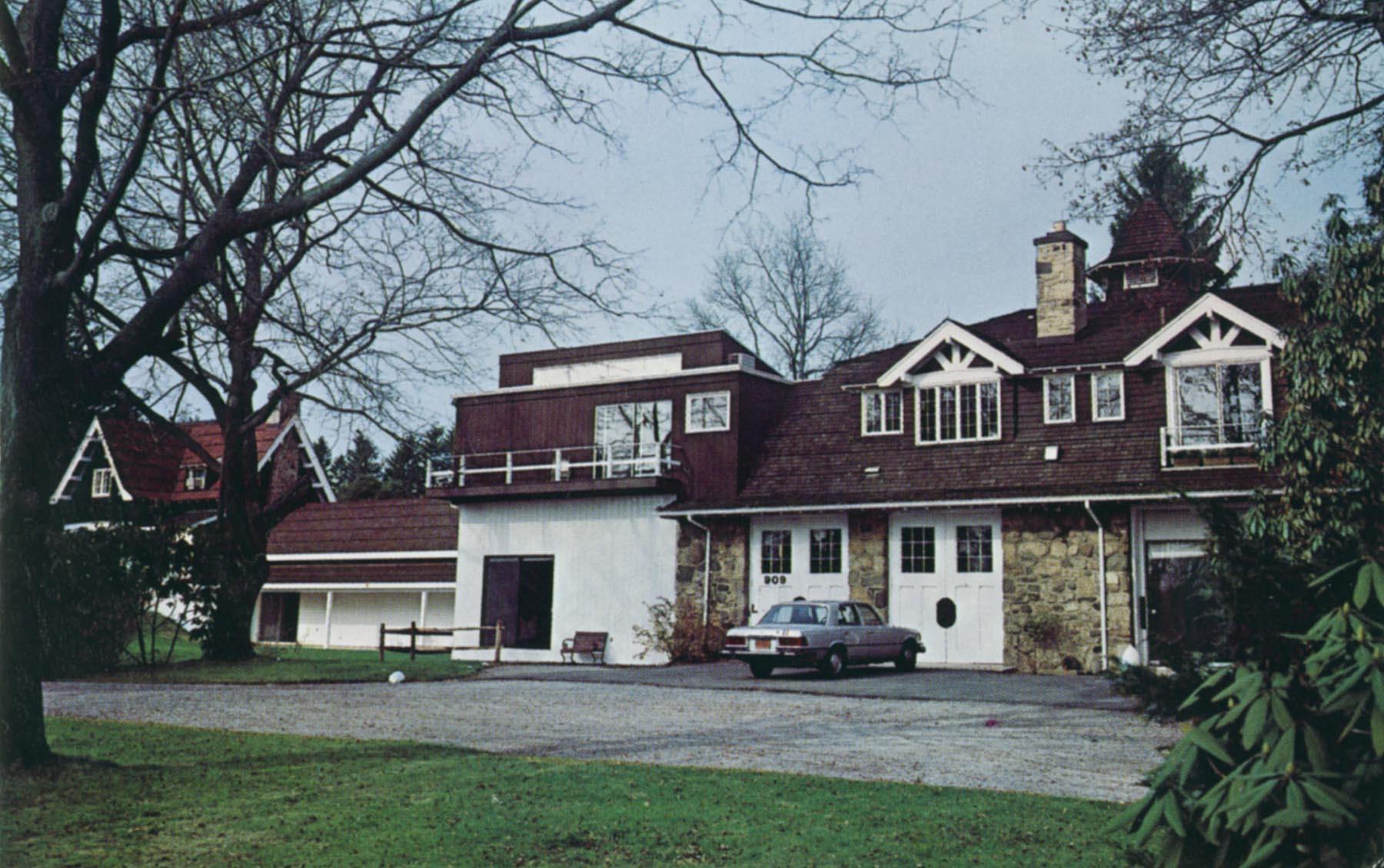
Motherwell’s home and studios in Greenwich, ca. 1975.
Motherwell usually came down to the studio from his living quarters on the second floor of the carriage house around 10 am. Typically, he spent the mornings working with his secretary to answer the large volume of correspondence directed to him about his own work and a wide range of artistic, literary, and cultural issues. His responses were thoroughly planned and carefully articulated. He would dictate a first draft to his secretary, then carefully hand correct and make additions to the typescript.
For his editorial and curatorial undertakings at this time, Motherwell had a working relationship with Stephanie Terenzio, curator at the William Benton Museum of Art at the University of Connecticut, Storrs, who curated the exhibition Motherwell & Black, which opened in March of 1979. Later, Terenzio began work on The Collected Writings of Robert Motherwell and shared relevant material from that project with me. In the same year, Motherwell became close to art historian Jack Flam, who curated the first retrospective exhibition of his drawings at the Janie C. Lee Gallery, Houston. Motherwell invited Flam to serve as co-editor of his celebrated Documents series, renamed the Documents of Twentieth Century Art. Since that time, Jack has written a number of important works on Motherwell, and he remains a good friend.
Between the stages of daytime work on his correspondence, Motherwell often went to his collage studio, a room about thirty-foot square located next to the office, which was the first addition he made to the studio complex. It was originally a painting studio, but Motherwell told me he soon noticed, unhappily, that his paintings were getting smaller in that relatively confined space. Unlike the deliberately sparse character of his large painting studio, the collage studio was littered with material. Partly completed works were spread across the entire floor; all sorts of different papers, some whole, others cut and torn, covered nearly every horizontal surface. The collage materials he selected tended to feature abstract designs and lettering rather than realistic imagery. These included labels from comestible goods, addresses from packages he had received, and sheets of musical scores, among others. Motherwell constantly revised his collages, moving a piece of paper here and then substituting another, adding a label to a work and then returning in a few moments to put it somewhere else. He told me that his collages were a modern equivalent of traditional still life paintings. In his words, they were records of his “intimate experiences in the studio and the life of an artist.”
Generally, everyone at the studio gathered for lunch, and the conversation ranged from contemporary happenings in the art world to politics and social issues. An important addition to Motherwell’s afternoons was printmaking. In 1973, master printmaker Catherine Mosley had joined his studio crew, and shortly after, he purchased a Brand etching press and began to produce his own print editions. Working with Motherwell, Mosley specialized in lift-ground etching. This process allowed the immediacy and intuitive painterly execution that was at the core of Motherwell’s art to translate into prints. I recall Mosley telling me that she had experimented extensively with sugar lift formulas to find one with a viscosity that was similar to oil paint. Thus, the marks Motherwell made, once etched into the plate, had the fluidity and force of his paintings. Once the sugar lift formula was prepared and the plate readied, Motherwell could create a configuration of brush marks at any moment inspiration came to him. I recall that once the primary image was executed, Motherwell’s discussions with Mosley often concerned multiple runs of a second plate through the press to create a field around the brushed imagery that would have the exact color intensity the artist desired.
Motherwell spent a good part of his afternoons in the large painting studio, studying works and preparing to paint. This area, which was the last addition to his studio complex, was approximately one hundred feet long by thirty feet wide. It connected the first architectural addition, the collage studio, with the cottage and former stables at the far end of the property. The proportions of the painting studio were intended to mirror those of a large New York City loft. The studio had a shallow porch in front of sliding glass doors and sky-lights that ran its entire length, giving an abundance of natural light. Track lights were also installed that covered the length of the space, since Motherwell frequently painted at night. On the wall near the studio entrance, Motherwell had tacked dozens of reproductions of images that interested him. While most of these reproductions were frequently changed, the ones with permanence included Francisco Goya’s Saturn Devouring his Son (1819-23), Piero della Francesca’s Flagellation of Christ (1468-70), Henri Matisse’s Open Window, Collioure (1914) and Icarus from Jazz (1947), as well as a black and white photograph of an archaic Greek temple. I will leave it to the reader to make the appropriate connections.
The main lateral wall and far end wall of the studio were entirely devoted to the creation of paintings and their display for the artist’s contemplation. Painting storage racks were installed both near the entrance to the studio and at its far end. The spacious walls could accommodate paintings on which the artist was currently working, as well as a dozen or so large already completed works.
During the time that I was at Motherwell’s studio, he had a single studio assistant whose main tasks were to stretch canvases, frame works, and construct shipping crates. Every brushstroke on Motherwell’s canvases belonged solely to the artist.
Motherwell asked, often several times during a day, to have different works pulled from the storage racks so that he could study them in relation to each other and compare them to his most recent paintings. He had a fondness for sitting in canvas “director’s chairs” spread around the studio as he moved his attention from one painting to the next. It was here during his spare moments that Motherwell talked to me about my project and shared some of his broader ideas on creativity.
Motherwell regularly painted from around nine in the evening until two or three in the morning. I asked several times if I might be present, including twice after dinner with him when he was on the way to the studio. I was turned down flatly each time. In fact, I know of few photographs–and even those that exist seem carefully staged–of Motherwell painting. His late-night work hours provided a block of time during which he was unlikely to be interrupted. But, more than this practical aspect, Motherwell’s painting activity was solitary, a time when the artist needed to be absolutely alone. I believe the act of painting had for him a deeply personal and even ritualistic character that could be neither shared with nor observed by others. Motherwell’s belief in the unique power of the creative act was characteristic of his generation.
Motherwell is legendary for his enormous intellect and his command of numerous academic disciplines. Having studied at Stanford, Harvard, and Columbia universities, he was deeply read in art history, modern literature, especially French Symbolism, psychology, and philosophy. He was an essayist, the founding editor of the groundbreaking Documents of Modern Art series, and a frequent spokesperson for his generation of artists. These abilities certainly informed his art, but I believe his intellect was also used as a protective armor. Often, he employed his erudition as a device to deflect attention from the more atavistic and sensual side of his artistic personality. Motherwell spoke to me frequently of his interest in primal forms and types of creativity that are not often cited in relation to his art. He told me, “I have always been extremely interested in children’s art and primitive art. It seems to me what is most genuine is an instinctive response.” He felt people should prioritize their instincts. “Few people know what to do in the bustle of New York City,” he told me, “whereas everyone knows what to do on an isolated island.” He recounted that “The cultures I am interested in are those where technology has not advanced. It is there that I find the strongest sense of humanity.”
In this regard, Motherwell spoke to me on a number of occasions about his deep interest in Paleolithic art, which he likened to his lonely nights in the studio. (In 1958, Motherwell visited the caves of Altamira and Lascaux with Helen Frankenthaler.) “I feel a deeply warm heartfelt response for cave paintings,” he told me. “They show on their own terms the essence of capturing the animal from the hunter’s viewpoint. They must have been done after observing and hunting the animals all day. Then the hunters return to the cave and by torch light and through heightened sensitivity an after-image comes with incredible clarity.”
In terms of primal feelings, an origin story that Motherwell repeated to me several times concerned his childhood. He told me that as a child he had such severe asthma that his family feared for his life. He confided to me that a special party was held on his fourteenth birthday because his parents had not thought that he would survive to that age. Motherwell believed that his fixation on death, a major theme of his art, should be traced in a very direct and personal way to this childhood illness.[3] As a result of his chronic asthma, Motherwell’s family sent him in 1929 to the Moran Preparatory School in Atascadero, California. Motherwell believed that his “instinctive tendency toward southern climates” may be traced to that experience. He reminisced about the sensuality of “dry colors, lumpy landscape, the houses with simple shapes and rough walls, the French doors, and blue sky.” These childhood sensory impressions made by Central California were reinforced during the artist’s formative 1941 trip to Mexico with Roberto Matta. Motherwell held that those areas and their cultures represented life and vitality for him, as well as a direct confrontation with mortality. He continued, “I never dream of contemporary events. I always dream of personal victories or tragedies, or some monster trying to kill me.”
My period at Motherwell’s studio followed his completion of the monumental Reconciliation Elegy (1978, 120 x 364 inches) commissioned by the National Gallery of Art. Motherwell voiced his difficulties about creating a work of that scale in terms of maintaining a sense of immediacy and freshness. He showed me the study for the painting (5 ¾ x 18 ¼ inches) and described the process of scaling up the image using the type of grid system that had been employed in old master paintings. To execute the work horizontally on the floor of his painting studio, he had special brushes constructed that were attached to long poles.
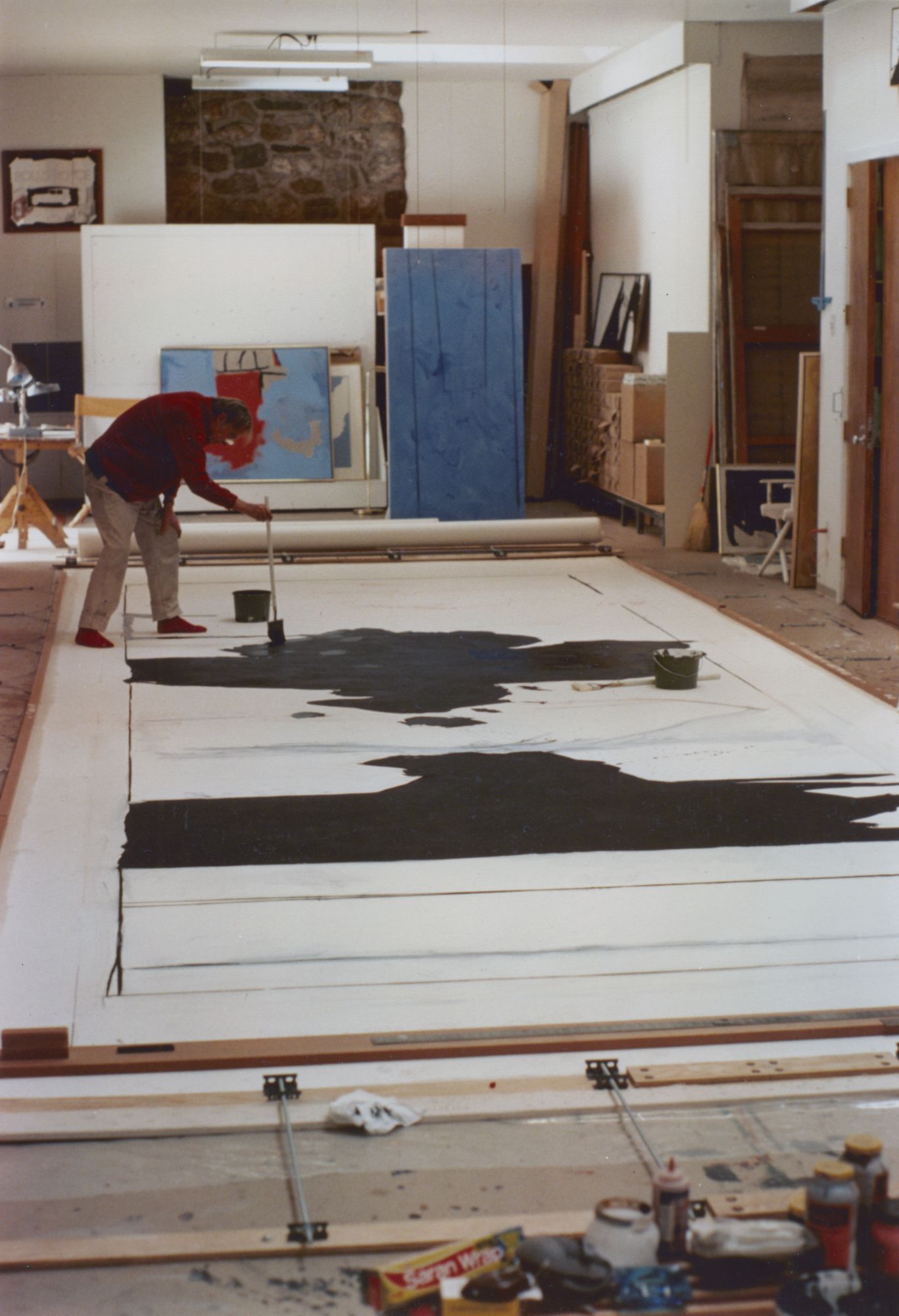
Motherwell painting Reconciliation Elegy, 1978
At the studio, the works I most clearly recall are his Drunk with Turpentine paintings (1979-83), as well as a number of small Elegies. These works would appear regularly in groups of four and five on the wall of the large painting studio as the weeks progressed. Motherwell told me that the Drunk with Turpentine works and the expressionistic Elegies were a way of recapturing the gestural immediacy and unfettered invention that he believed were at the core of his work. The Drunk with Turpentine paintings featured powerfully executed brushstrokes in configurations like ovoids, slabs, double peaks, and vertical strokes supporting an angular vector line that had long fascinated Motherwell. The immediacy of the marks was palpable. Motherwell compared their freedom to that of his Lyric Suite drawings of 1965 but called the latter works “more erotic.” Motherwell told me the Drunk with Turpentine series was inspired by Pablo Neruda’s sexually charged poem from which the title of the group is taken:
Drunk as drunk on turpentine
From your open kisses,
Your wet body wedged
Between my wet body and the strake
Of our boat that is made of flowers . . .
Motherwell related to me that in addition to the raw power of these works, he was pleased with the scale of the series (often around 23 x 29 inches) and particularly the relationship between oil paint and the paper support. He called paper “the ideal painting surface,” and he was taken with the manner in which oil paint bled at its edges, yielding translucent brown/yellow halos surrounding the brush marks.
For Motherwell, painterly immediacy was an essential feature of his art. He was well aware of the various automatic procedures practiced by André Masson, Max Ernst, and other Surrealists. He insisted, however, that the Surrealist use of automatism was directed toward image creation, whereas his usage was focused on the invention of abstract forms. Thus, he called his use “plastic automatism.”
More to the point, Motherwell viewed automatism in a very direct, instinctive, and personal manner, as a way “to uncover originality.” He told me:
The value of automatism I realized immediately from Surrealism was that it allows one to be completely individual. There is no way to be derived consciously from something else as is so much painting in the whole history of art. But instead to be completely myself. The key to automatism is that I could not help but be original.
Tied to Motherwell’s use of automatism was his belief that marks made intuitively revealed essential truths about his personality. He called this “the shock of recognition.” In response to one of my questions about painting procedures, Motherwell mused, “Making a painting is like a throw of the dice. Only after they are cast can one look at the results and recognize either it tells something about what one is, or it must be changed.” Motherwell’s fascination with unexpected discoveries in his works led to his well-known propensity for recovering earlier paintings from his storage and reworking them. Thus, many of his works have multiple dates – sometimes years, occasionally even decades, apart.
Motherwell termed this process “relational structures.” He told me that he first learned this procedure from the philosopher Alfred North Whitehead. Although Whitehead had just retired from Harvard when the young student from California arrived, Motherwell attended his emeritus lectures at Wellesley College. Of all Motherwell’s references to philosophy, writings by Whitehead may be the most frequent. At the time I was at the studio, the artist had seven books by Whitehead in his library, four of which were acquired when he was at Harvard. Whitehead once wrote, “Importance generates interest. Interest leads to discrimination. In this way the two factors stimulate each other.” Motherwell related to me, “Whitehead led me to understand a self-contained system of internal relations. This is how I could start as an abstract artist.” During the months that I was at the studio, I rarely saw Motherwell without a book in his hand. He was both a deep reader and in his own words “browsed” literature for ideas that informed and complemented his artistic vision.
For Motherwell, relational structures were, in his words “the relations between elements–rhythm, spatial interval, format, extension, liquidity, light, intensity of hue, and so forth.” He continued: “When a painting is not feeling right, the problem is to figure out which of the structures is not right. But, each of these must be felt.” He confessed to me, “My colleagues have been very good at using sources and then covering them up. I am less good at hiding these. One can see in my work my respect for Picasso, Matisse, and Mondrian.” Motherwell was keenly aware that his implementation of structures used by modern artists of the previous generation had occasionally led to criticism of his work, but he professed, “What is most important to me in a painting is seeing that all options are available and that there is a mind at work free to choose between those options.”
Overall, Motherwell summarized his direct and sensual mode of artistic communication as “feelings.” He stated to me, “In no other language except the arts is there an equivalence for feelings.” Motherwell was intent on differentiating feelings from emotions: “Emotions are already inside of you. Feelings are triggered by something on the outside. What activates my feelings has nothing to do with my emotions. I am as leery of emotions as I am of expressionism.” He continued, “A clear metaphor would be the range of feelings that are connected with the warmth of the sun. Feelings are direct and immediate, so immediate that a baby or a genius will have the same response. Feelings are not truth. Rather, there is a process of discovery of what one really feels. That is what I seek in my art.” Motherwell’s essential belief in “feelings” allowed him to express his enhanced sensitivity to the world around him in an abstract manner which he hoped to communicate to a wide receptive audience.
After my months at Motherwell’s studio, I returned to Princeton to do further research, conduct interviews with Motherwell’s colleagues, and begin writing my dissertation. Also, I married Liza Rolland the summer of 1980. In August, Motherwell invited us to spend several days of our honeymoon at his home/studio in Provincetown. We arrived just as he was returning from events that were part of his retrospective exhibition at Centre Cultural de la Caixa de Pensions in Barcelona. He came back to Provincetown with a group of young Spanish artists, critics, and writers. Among them was Federico García Lorca’s niece, Laura García Lorca. (Of course, Lorca’s poetry had been a lifelong inspiration for Motherwell, especially in the creation of his Elegies.) On the first night, we all went to a nearby seafood restaurant, Pepe’s Wharf. Pepe had fought as a volunteer in the Abraham Lincoln Brigade during the Spanish Civil War and been wounded in action. When he learned that Motherwell was coming with Lorca’s niece and the other Spaniards, he prepared an enormous “fruits de mer.” Around the table, the conversation about politics and art was fast-paced and thrilling, often centering on new cultural possibilities since Francisco Franco’s death in 1975. At the end of the meal, Pepe pulled out a bottle of Fundador, the favored Spanish brandy, and we all toasted “Free Spain!” My young bride leaned over and whispered in my ear “It doesn’t get any better than this.”
. . . .
[1] It was later published as “The Emperor of China: Symbols of Power and Vulnerability in the Art of Robert Motherwell,” Art International, 1982.
[2] My dissertation was later revised and published as Robert Motherwell: The Formative Years, UMI Research Press, 1987.
[3] My third article on Motherwell’s art during the 1940s was titled “Robert Motherwell’s First Collages: All my Life I have been Obsessed by Death,” Studies in Iconography, 1989.

